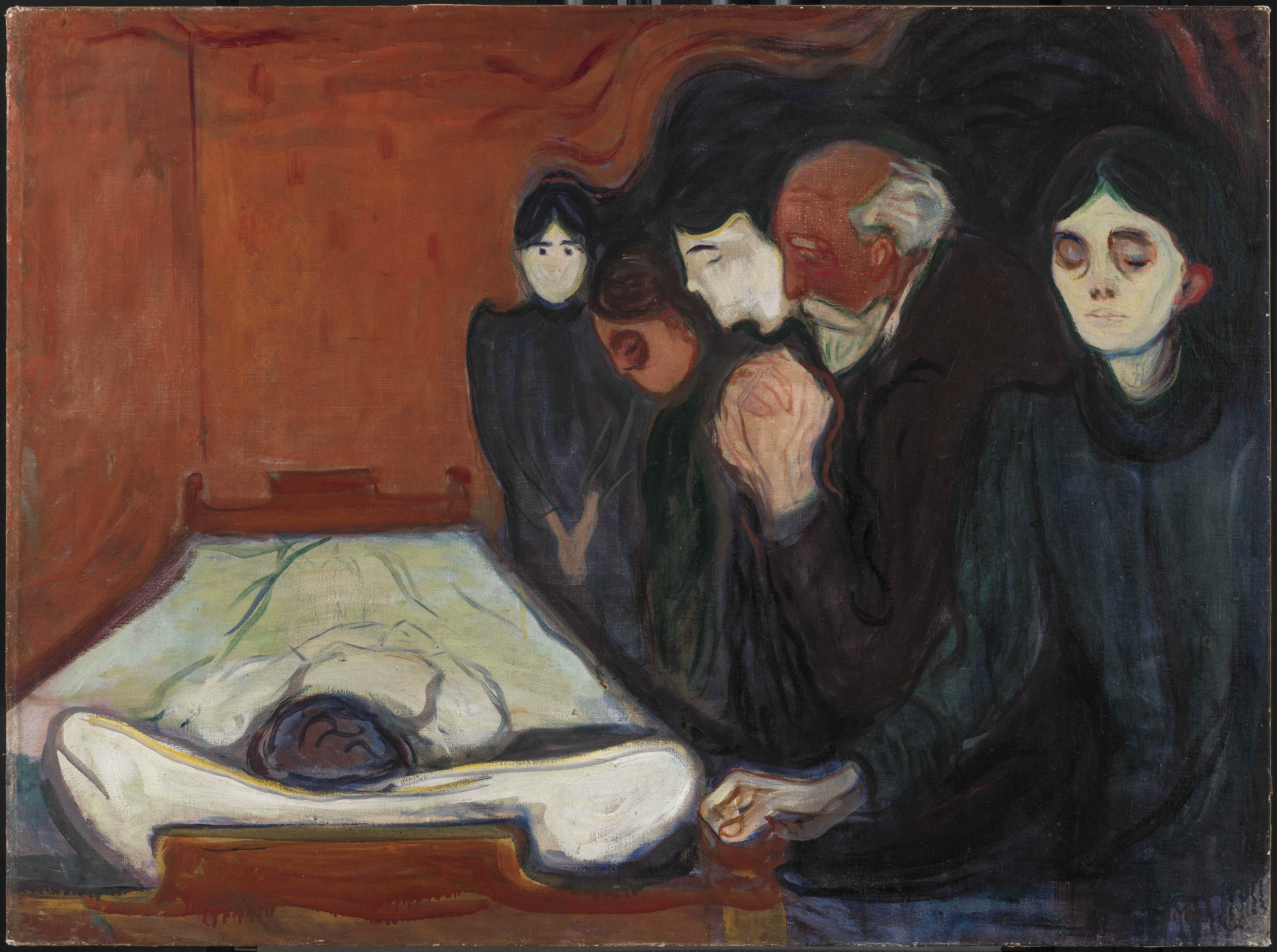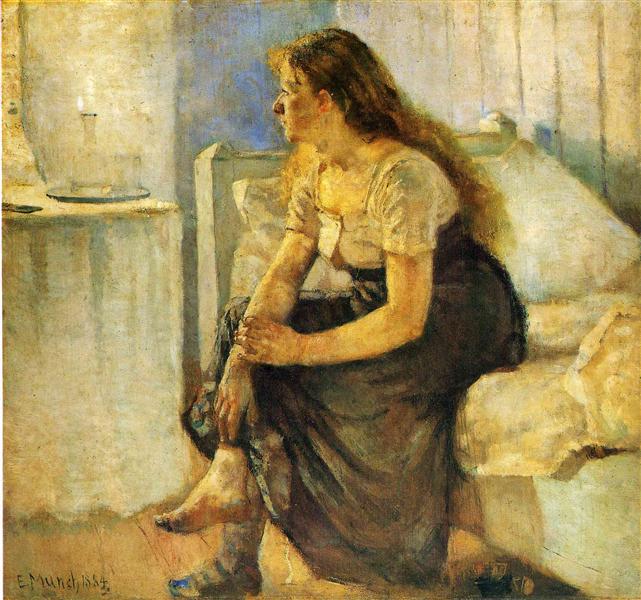Edvard Munch tried to paint away his fears. Universal History Archive/Universal Images Group/Getty
The characters depicted in Edvard Munch’s paintings are rarely having a good time. Lamp-lit streets are thronged by haunted faces. Characters sit hunched over small tables in dim and dark bars, nursing glasses of wine, their gaze fixed on the middle distance. And then there is The Scream.
Even when, occasionally, the seductive femme fatale figures are expressing joy, it’s more schadenfreude than innocent pleasure. They delight in cavorting with a new lover while their ex paramour skulks miserably in the background. Or else they are resplendently basking in their own physical charms while a rejected man stands sadly nearby.
Unsurprisingly, then, the majority of the paintings featured in Edvard Munch: Masterpieces from Bergen — which opens at the Courtauld next month — are sad scenes. By the Deathbed (1896), for example, shows a family assembled round a prone female figure, their eye sockets deep with misery, their faces gaunt and their mouths agape with wordless grief.

There is a purpose to this misery. In 1932, Munch wrote: “In my art, I have tried to clarify life and its meaning for myself. I also intended to help others explain life for themselves”. Art, then, was used by him as a form of therapy: a way of making sense of sadness and helping others to heal. Confronting us with our own angst and sorrows, he has a knack for reaching out to viewers of every background, in every age. He understands the nuances of relationships — the petty jealousies, the spite — and they manifest in his characters, who appear to us, the viewers, as all too human.
One of the first paintings you see as you enter into the exhibition, which is currently on in Bergen, is Man and Woman (1898). Two figures are seated in a bedroom: a woman sits back on the bed, nude, while the man sits with his head in his hands, in apparent torment. It is clear that a conversation has taken place, one that has upset the man; the woman is seductive, very much in charge in the relationship dynamic.

Munch was born to a bourgeois family in Christiania, the son of a doctor. Although by some measures he had a relatively privileged childhood, grief was at his heels. Both his mother and sister succumbed to tuberculosis, the latter at only 15 years old. Munch himself nearly died of a pulmonary attack as a child: as he coughed up blood, his relatives feared the worst. He survived, but was left with chronic bronchitis, and a permanently altered perception of the world.

 Main Edition
Main Edition US
US FR
FR







Join the discussion
Join like minded readers that support our journalism by becoming a paid subscriber
To join the discussion in the comments, become a paid subscriber.
Join like minded readers that support our journalism, read unlimited articles and enjoy other subscriber-only benefits.
SubscribeBeautiful essay. I particularly enjoy the final painting, “Morning.” He captures the light wonderfully and the influence of the impressionists is there. An optimistic painting, imo, and I’m surprised it was painted in 1884, quite early in his life. I thought perhaps he painted it toward the end when he seems to have found some level of contentment.
I think there’s great catharsis to be found in Munch’s paintings. When you stare the darkness in the face it loses much of its power over you, imo.
Munch had the canvas on which to display his mental illness. Now we have Tik Tok.
There’s some truth in that, but its also true that there are more people practising some form of artistic activity (including crafts and digital art) than ever before. Galleries still have far more potential artists vying for their attention than they can possibly exhibit and many artists have to put their work into online shows in the hope of getting noticed.
Of course, there are many more female artists gaining attention now, and a far greater mix of ethnicities gaining traction and rightly so. It’s entirely human, as with Munch, to want to put something into the world that will survive one’s own exit, and hopefully something of value. That’s a human need that no amount of posting on Tik Tok or other online media can satisfy.
Munch’s early, most famous work, in which he displays his mental illness, was ugly, frightening, and technically amaturish; that he recovered and was capable of producing the beautiful “Morning” is a miraculous, unexpected turn of events. I very much doubt the psychotics on Tik Tok proudly boasting of their various deviancies aspire to such an outcome. They are not producing art. They are making pathetic spectacles of themselves.
Absolutely. There is a link between creativity and mental illness but its not straightforward or necessary. Perhaps within your point there’s also the suggestion that at least some of those using Tik Tok to give their ‘followers” the benefit of their poor mental state are depriving themselves of the potential for personal growth which might (as with Munch) lead to something of more lasting value.
Well done to Unherd for facilitating these diverse and fascinating articles.
Very good point. The Tik Tok freaks all wear the same uniforms (tats, unnatural hair color, hardware through their flesh); there is nothing artistic or creative about a uniform: its very purpose is to stymie individuality. If they somehow manage to free themselves from their narcissism and find their true selves, they might attain their Munch moment. Here’s hoping.
Munch’s paintings are the ancestors of Scandi Noir. Everyone is so serious and no one is ever happy. Would it hurt them to crack a joke? Or even slip on a fermented herring?
His Madonna is worth a look.
Went to Oslo in my 20’s and enjoyed the Munch musuem however the real mindblower was Vigeland park where a sculptor called Vigeland spent 25 years building a sculpture park.Never heard of Vigeland before.
Enjoyed Ibsen plays as well in my 20’s but nowadays notice the only Ibsen plays that are put on are the ones with a heavy feminist message